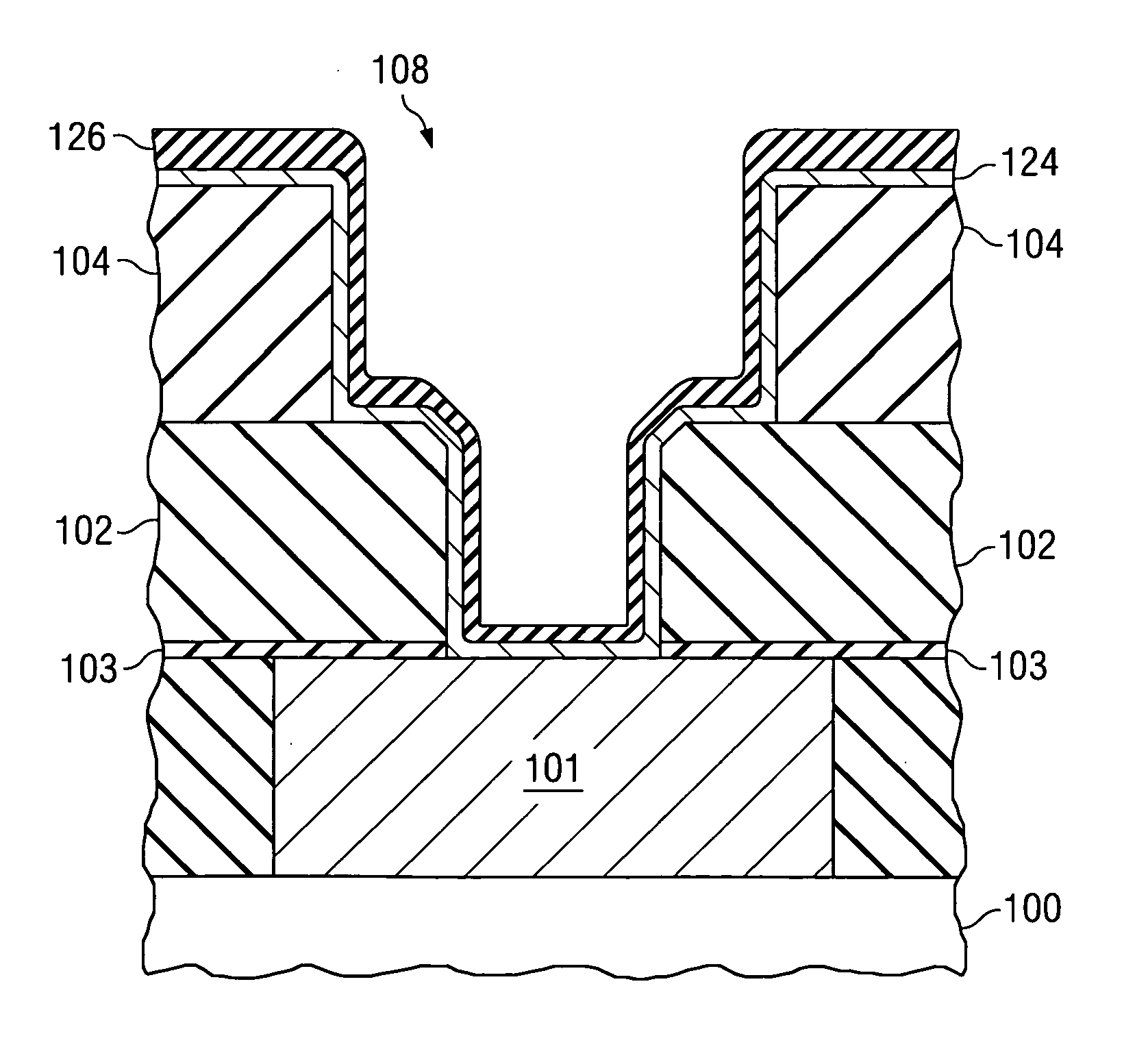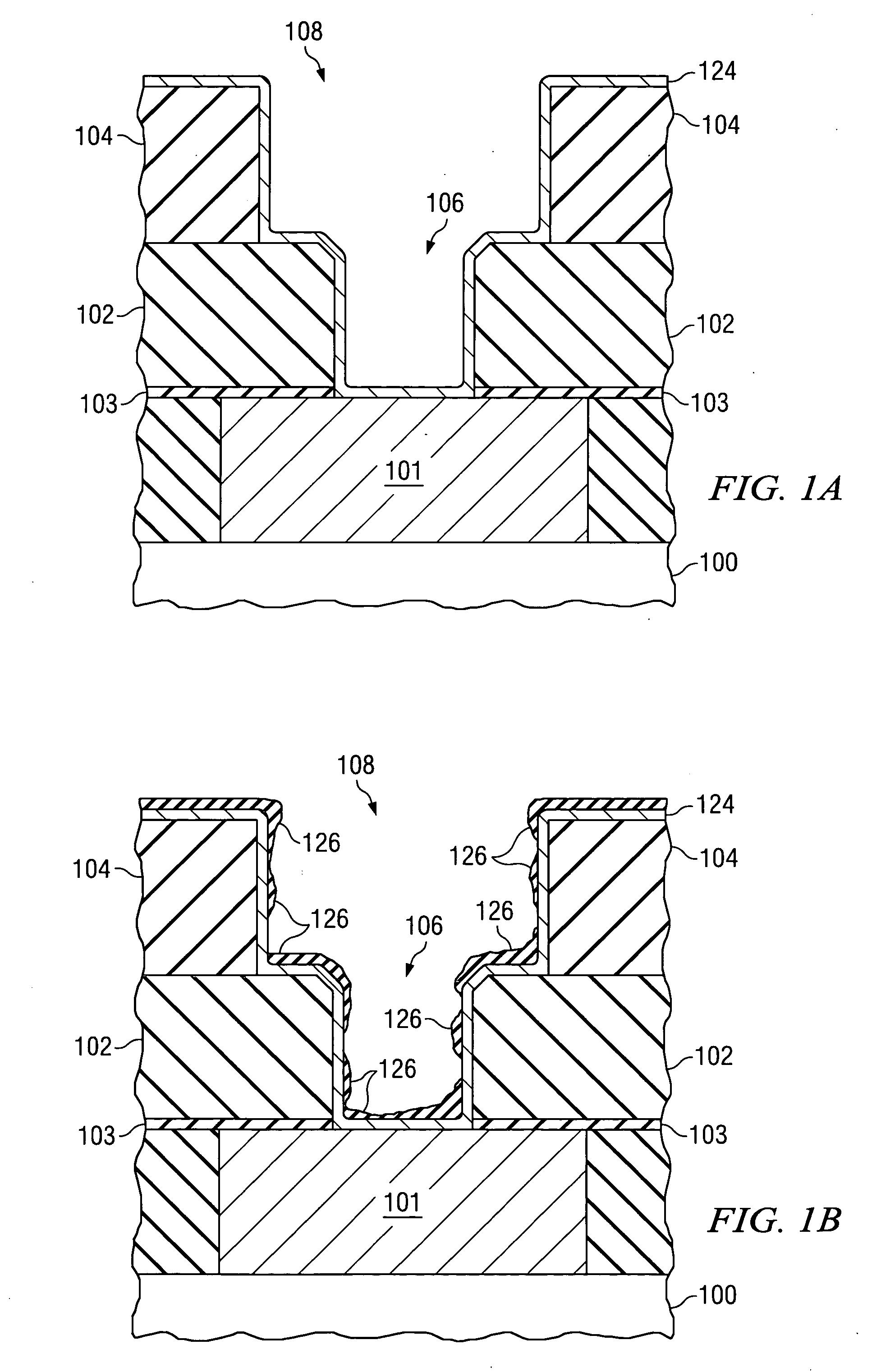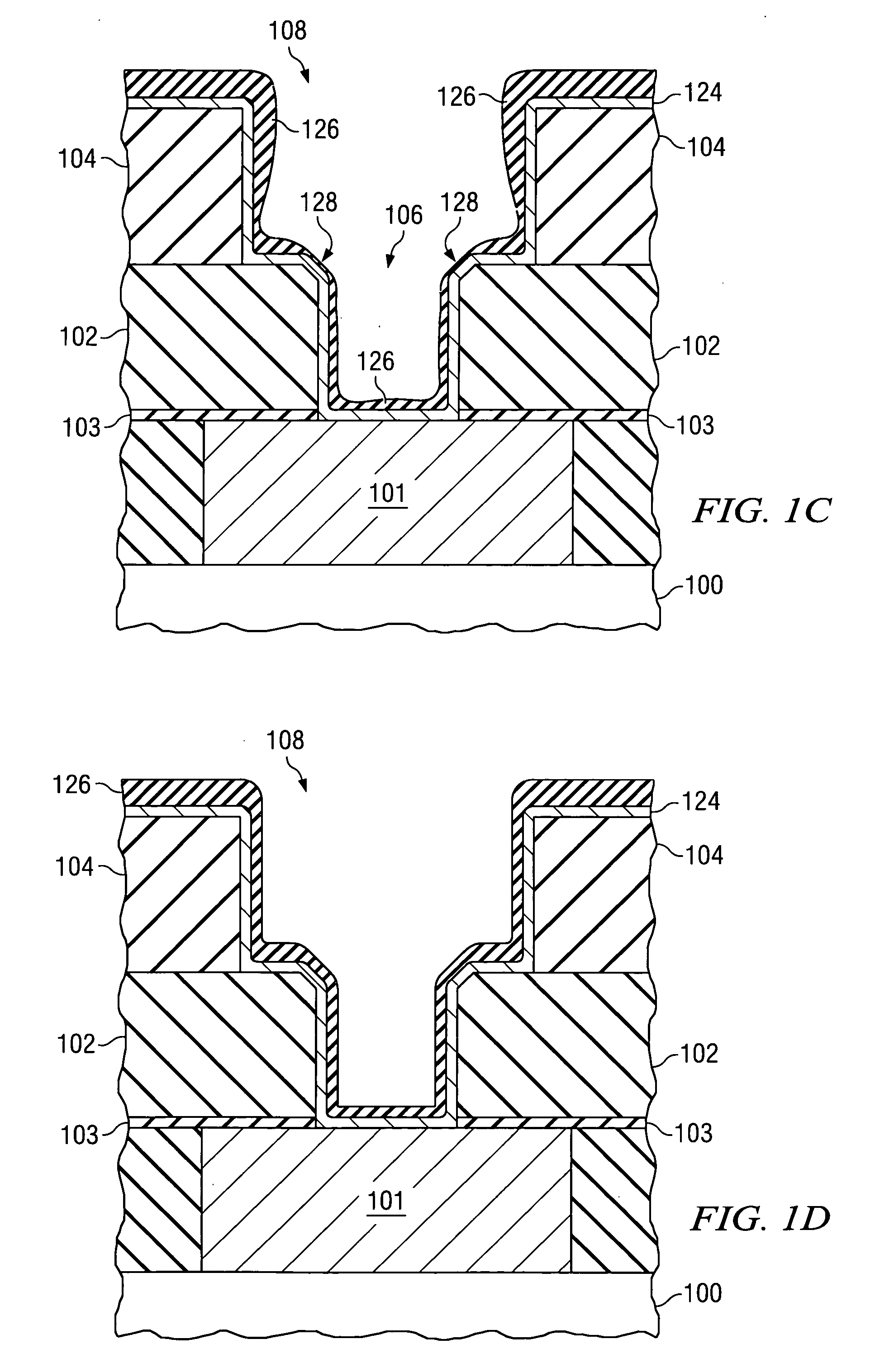HSQ/SOG dry strip process
- Summary
- Abstract
- Description
- Claims
- Application Information
AI Technical Summary
Benefits of technology
Problems solved by technology
Method used
Image
Examples
Embodiment Construction
[0010] In a via-first dual damascene process, it is desirable to protect the via etch-stop layer during the trench etch. Accordingly, a temporary material may be applied to fill the via and protect the etch-stop layer at the bottom of the via during the trench etch. After trench pattern and etch, the temporary material is stripped from the via. BARC has been proposed as this temporary material. Alternatively, the invention uses a spin-on dielectric, such as HSQ (hydrogen silsesquioxane) or SOG (spin-on glass), as this temporary material.
[0011] A process for removing the spin-on dielectric after trench etch should minimally impact the via or trench structure. Wet strip processes can cause CD blow out (a widening of the trench or via) and have insufficient selectivities to adjacent materials. In addition, the wet strip may not result in complete removal of the spin-on dielectric.
[0012] In light of the problems with a wet strip of a spin-on dielectric, the invention uses a dry strip ...
PUM
 Login to View More
Login to View More Abstract
Description
Claims
Application Information
 Login to View More
Login to View More - R&D
- Intellectual Property
- Life Sciences
- Materials
- Tech Scout
- Unparalleled Data Quality
- Higher Quality Content
- 60% Fewer Hallucinations
Browse by: Latest US Patents, China's latest patents, Technical Efficacy Thesaurus, Application Domain, Technology Topic, Popular Technical Reports.
© 2025 PatSnap. All rights reserved.Legal|Privacy policy|Modern Slavery Act Transparency Statement|Sitemap|About US| Contact US: help@patsnap.com



